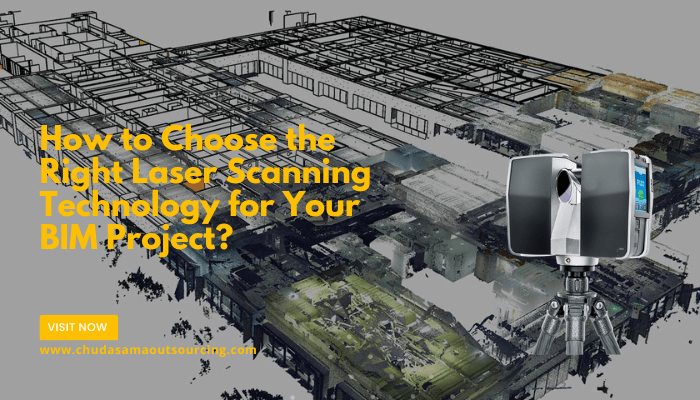Although the AEC industry is slower to accept new technologies, it has embraced a few new tools, methods, and plans to increase the efficiency of projects. One such innovation, 3D Laser Scanning, Laser Scan to BIM Services does have the ability to assist businesses in completing tasks more quickly and accurately.
The technology may be made as simple or complicated as you require and demand. In either case, employing the technology effectively requires adhering to a collection of 3D Laser Scanning guidelines. The main typical best practices and well-liked building applications may be seen here.
Utilizing Point Cloud to 3D Model might be something you want to think about if you want to cut down on labor costs, enhance material cost estimates, and shorten the planning process for your next building project. The latest BIM technique, laser scanning, provides a precise, economical, and highly integrated way to visually model building, renovation, and construction projects.
This article delves deeper into laser scanning technology, how it may be used in building projects, the costs and advantages of this cutting-edge new technique, and also about the best selection of the right Laser Scanning technology for your BIM project.
Laser Scanning: How Does It Work?
In recent years, laser scanning has been advancing steadily to provide quicker and more precise scanning outcomes.
A 3D Laser Scanner is a spinning, tripod-mounted, terrestrial equipment. Once turned on, the scanner rotates quickly while producing a very precise moderate infrared laser beam onto a revolving mirror that records 360-degree photos of the surroundings.
Millions of data points per sec are recorded with a normal gap of 1 to 3 mm as the laser beam scans the space, illuminating every item in its route leading to the scanner. The end output is a vector picture of a point cloud with accurate calculations for each point’s X, Y, and Z-axis as well as RGB readings.
Today’s laser scanners generate the most precise measurements of any object, building, or environment using laser beams, cutting-edge sensors, GPS, photodetectors, receiver devices, and Inertial Measurement Units.
Advantages of Laser Scanning Technology
Let’s go on and talk about the advantages of Laser Scanning Services, which have greatly facilitated and sped up the comprehension of restoration projects.
-
Detailed Design Assessment:
The thorough and in-depth study and analysis of the structure or its architecture is the first stage that must be taken into account while operating on a refurbishment or restoration project, and this validates the entirely new design.
This project’s execution aids in the creation of a precise 3D model that includes all the intricacies and other MEP elements. The following stage of the project, collision detection and modification of the structure, is carried out using these developed BIM models. Laser Scan to BIM Modeling Services provides access to the project’s most precise information.
-
Structure Evaluation:
An essential component is the examination of the building model, which can only be done with the use of laser scanning technology.
This service helps with understanding the condition of the building’s structure, components, or design as well as assessing and calculating the general information that may come up during the rebuilding phase. Planning, pricing, predicting, timelines, and a work plan are all included in the estimation.
-
Effortless Teamwork and Collaboration:
Proper teamwork and collaboration are essential to the success of any project. The finest part of laser scanning services is the 3D models produced by the scan machines’ coordination, which also fosters balanced communication skills among the project’s participants.
-
Further Design and Planning:
The very first step that has to be conducted prior to construction is to assess the structure’s existing state and determine whether it conflicts with any recently developed plans. Because of the laser scans which have been acquired, the proportions and the specifics are precise. This procedure helps to have appropriate, accurate, and appropriate planning for the 3D Revit Modeling.
-
Reducing Risk:
The risk associated with the total project is greatly decreased with the aid of laser scanning services. The amount of modification required and the associated risk are both significantly decreased as a result of all the information collected using laser scanning methods.
Conclusion
The foundation of construction projects is BIM. Building Information Modeling is allowing new methods of working for improved design, execution, and upkeep of physically constructed facilities thanks to digital technologies, like 3D Laser Scanning technology.
Avoiding hurried judgments that are made late on the basis of incomplete and inaccurate information is a major issue that BIM attempts to solve. With the usage of Laser Scan to BIM, these choices may be “upstreamed” so that they’re clearly represented and come with no misunderstandings.
We are already on our way to attaining broad acceptance and awareness for BIM by utilizing Point Cloud to 3D Model tools.



